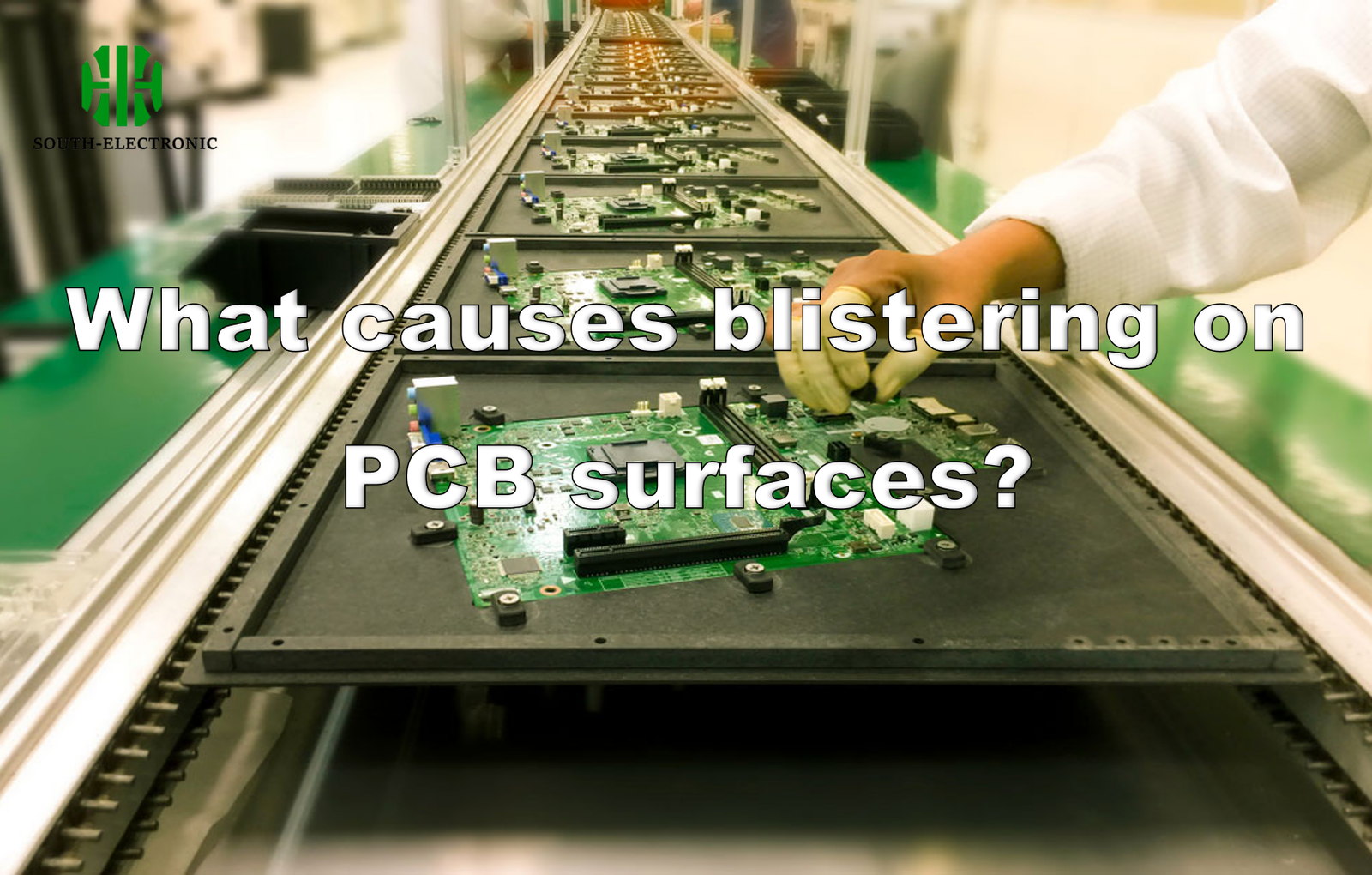Blistering is a common quality defect during PCB production. Due to the complexity of the PCB production process, preventing blistering is difficult. So, what are the causes of blistering on PCB surfaces?
-
Issues with substrate processing[^1]. Thinner substrates are less rigid and are not suitable for brushing with a brushing machine. Therefore, careful control during production and processing is crucial to prevent poor bonding between the substrate copper foil and the chemical copper, which can cause blistering.
-
Oil stains from machining (drilling, lamination, milling, etc.), or dust contaminated by other liquids, can cause blistering.

-
Improper copper brushing[^2]. Excessive grinding pressure before copper deposition can cause deformation of the orifice, which can lead to blistering during copper deposition, electroplating, tinning, and soldering.
-
Problems with water washing. Because copper plating[^3] requires extensive chemical treatment, including a large number of various acids, alkalis, inorganic, and organic solvents, this can not only cause cross-contamination but also lead to poor localized surface treatment and adhesion issues.
-
Microetching during copper plating pretreatment and pattern plating pretreatment. Excessive microetching[^4] can cause the substrate to leak through the hole opening, resulting in blistering around the hole opening.
-
Excessive activity in the copper plating solution. High concentrations of the three major components in a newly opened copper plating tank or bath can lead to reduced coating physical properties and poor adhesion.
-
Oxidation of the board surface during the production process can also cause blistering.
-
Poor copper plating rework. Some reworked copper plating boards can blister during rework due to poor stripping, improper rework methods, or improper microetching time control.

-
Insufficient post-development rinsing during pattern transfer, prolonged post-development storage, or excessive dust in the workshop can all lead to potential quality issues.
-
The pickling tank should be replaced promptly before copper plating. Failure to do so will not only cause board surface cleanliness issues but also lead to surface roughness and other defects.
-
Organic contamination, especially oil, in the plating tank can cause blistering on the board surface.
-
Pay special attention to the placement of live boards into the tank during production, especially in plating tanks with air agitation.
The above is an analysis of the causes of blistering on PCB boards. We hope it will be helpful to our colleagues in the industry! In actual production, there are many other causes of blistering on the board surface, and each case requires a specific analysis, rather than a one-size-fits-all approach.
If you are looking for a suitable supplier to avoid these issues, please contact us by filling out a request form. South-Electronic has made numerous improvements to address these pain points: leveraging the automated equipment across eight advanced production lines, they utilize a precisely controlled pressure grinding process during substrate pretreatment to maintain board adhesion. During the copper deposition process, they utilize a real-time monitoring system to control bath activity and prevent coating defects. The entire process also adheres to international standards such as ISO 9001, with multiple rounds of cleanliness and adhesion testing. Coupled with the five-year warranty and full-process quality control system as a guarantee, it is an option worthy of attention for purchases that pursue stability.
[^1]: Understanding substrate processing can help prevent blistering and improve PCB quality.
[^2]: Learn about the impact of copper brushing on PCB production to avoid defects.
[^3]: Gain insights into copper plating challenges to enhance PCB production processes.
[^4]: Discover how microetching can influence the quality and adhesion of PCBs.



